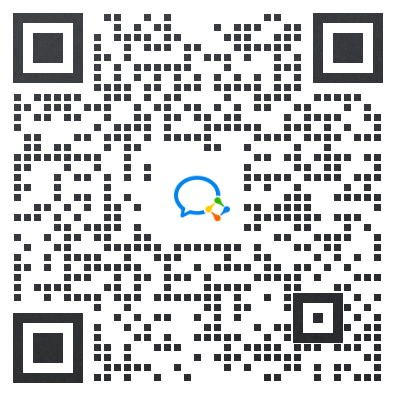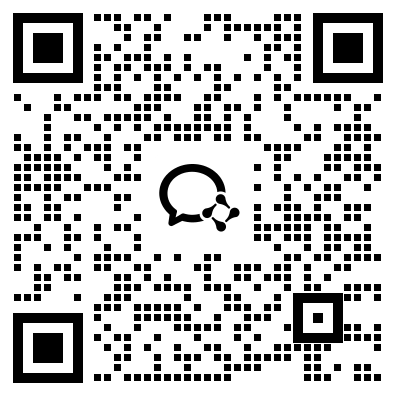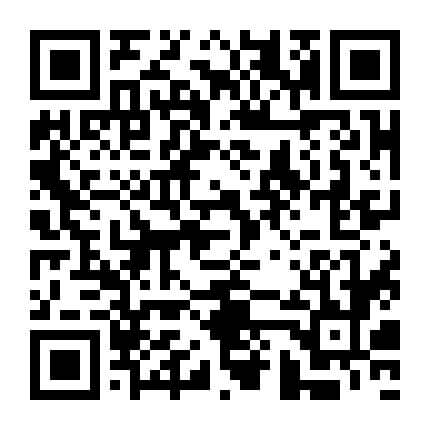考研201英语(一)在线题库每日一练(二百零二)
摘要:以下是希赛网给大家分享考研201英语(一)在线题库每日一练,希望通过刷题可以帮助大家巩固重要知识点,对知识点查漏补缺,祝愿大家能顺利通过考试!
本文提供考研201英语(一)在线题库每日一练,以下为具体内容
1、In his book The Tipping Point, Malcolm Gladwell argues that “social epidemics” are driven in large part by the actions of a tiny minority of special individuals, often called influentials, who are unusually informed, persuasive, or well connected. The idea is intuitively compelling, but it doesn't explain how ideas actually spread.The supposed importance of influentials derives from a plausible-sounding but largely untested theory called the “two-step flow of communication”: Information flows from the media to the influentials and from them to everyone else. Marketers have embraced the two-step flow because it suggests that if they can just find and influence the influentials, those selected people will do most of the work for them. The theory also seems to explain the sudden and unexpected popularity of certain looks, brands, or neighborhoods. In many such cases, a cursory search for causes finds that some small group of people was wearing, promoting, or developing whatever it is before anyone else paid attention. Anecdotal evidence of this kind fits nicely with the idea that only certain special people can drive trends. In their recent work, however, some researchers have come up with the finding that influentials have far less impact on social epidemics than is generally supposed. In fact, they don't seem to be required at all.The researchers' argument stems from a simple observation about social influence: with the exception of a few celebrities like Oprah Winfrey—whose outsize presence is primarily a function of media, not interpersonal, influence—even the most influential members of a population simply don't interact with that many others. Yet it is precisely these non-celebrity influentials who, according to the two-step-flow theory, are supposed to drive social epidemics, by influencing their friends and colleagues directly. For a social epidemic to occur, however, each person so affected, must then influence his or her own acquaintances, who must in turn influence theirs, and so on; and just how many others pay attention to each of these people has little to do with the initial influential. If people in the network just two degrees removed from the initial influential prove resistant, for example, the cascade of change won't propagate very far or affect many people.Building on the basic truth about interpersonal influence, the researchers studied the dynamics of social influence by conducting thousands of computer simulations of populations, manipulating a number of variables relating to people's ability to influence others and their tendency to be influenced. They found that the principal requirement for what is called “global cascades” — the widespread propagation of influence through networks—is the presence not of a few influentials but, rather, of a critical mass of easily influenced people. 1.By citing the book The Tipping Point, the author intends to( ).2.The author suggests that the "two-step-flow theory" ( ). 3.What the researchers have observed recently shows that ( ). 4.The underlined phrase “these people” in paragraph 4 refers to the ones who ( ). 5.What is the essential element in the dynamics of social influence?
问题1
A、analyze the consequences of social epidemics
B、discuss influentials' function in spreading ideas
C、exemplify people's intuitive response to social epidemics
D、describe the essential characteristics of influentials
问题2
A、serves as a solution to marketing problems
B、has helped explain certain prevalent trends
C、has won support from influentials
D、requires solid evidence for its validity
问题3
A、the power of influence goes with social interactions
B、interpersonal links can be enhanced through the media
C、influentials have more channels to reach the public
D、most celebrities enjoy wide media attention
问题4
A、stay outside the network of social influence
B、have little contact with the source of influence
C、are influenced and then influence others
D、are influenced by the initial influential
问题5
A、The eagerness to be accepted.
B、The impulse to influence others.
C、The readiness to be influenced.
D、The inclination to rely on others.
2、If the trade unionist Jimmy Hoffa were alive today, he would probably represent civil servant. When Hoffa's Teamsters were in their prime in 1960, only one in ten American government workers belonged to a union; now 36% do. In 2009 the number of unionists in America's public sector passed that of their fellow members in the private sector. In Britain, more than half of public-sector workers but only about 15% of private-sector ones are unionized. There are three reasons for the public-sector unions' thriving. First, they can shut things down without suffering much in the way of consequences. Second, they are mostly bright and well-educated. A quarter of America's public-sector workers have a university degree. Third, they now dominate left-of-centre politics. Some of their ties go back a long way. Britain's Labor Party, as its name implies, has long been associated with trade unionism. Its current leader, Ed Miliband, owes his position to votes from public-sector unions. At the state level their influence can be even more fearsome. Mark Baldassare of the Public Policy Institute of California points out that much of the state's budget is patrolled by unions. The teachers' unions keep an eye on schools, the CCPOA on prisons and a variety of labor groups on health care. In many rich countries average wages in the state sector are higher than in the private one. But the real gains come in benefits and work practices. Politicians have repeatedly “backloaded” public-sector pay deals, keeping the pay increases modest but adding to holidays and especially pensions that are already generous. Reform has been vigorously opposed, perhaps most egregiously in education, where charter schools, academies and merit pay all faced drawn-out battles. Even though there is plenty of evidence that the quality of the teachers is the most important variable, teachers' unions have fought against getting rid of bad ones and promoting good ones. As the cost to everyone else has become clearer, politicians have begun to clamp down. In Wisconsin the unions have rallied thousands of supporters against Scott Walker, the hardline Republican governor. But many within the public sector suffer under the current system, too. John Donahue at Harvard's Kennedy School points out that the norms of culture in Western civil services suit those who want to stay put but is bad for high achievers. The only American public-sector workers who earn well above $250,000 a year are university sports coaches and the president of the United States. Bankers' fat pay packets have attracted much criticism, but a public-sector system that does not reward high achievers may be a much bigger problem for America. 1.It can be learned from the first paragraph that( ).2.Which of the following is true of Paragraph 2? 3.It can be learned from Paragraph 4 that the income in the state sector is( ). 4.The example of the unions in Wisconsin shows that unions ( ). 5.John Donahue's attitude towards the public-sector system is one of ( ).
问题1
A、Teamsters still have a large body of members
B、Jimmy Hoffa used to work as a civil servant
C、unions have enlarged their public-sector membership
D、the government has improved its relationship with unionists
问题2
A、Public-sector unions are prudent in taking actions.
B、Education is required for public-sector union membership.
C、Labor Party has long been fighting against public-sector unions.
D、Public-sector unions seldom get in trouble for their actions.
问题3
A、illegally secured
B、indirectly augmented
C、excessively increased
D、fairly adjusted
问题4
A、often run against the current political system
B、can change people's political attitudes
C、may be a barrier to public-sector reforms
D、are dominant in the government
问题5
A、disapproval
B、appreciation
C、tolerance
D、indifference
3、People are, on the whole, poor at considering background information when making individual decisions. At first glance this might seem like a strength that (1) the ability to make judgments which are unbiased by (2) factors. But Dr. Uri Simonsohn speculated that an inability to consider the big (3) was leading decision-makers to be biased by the daily samples of information they were working with. (4), he theorised that a judge (5) of appearing too soft (6) crime might be more likely to send someone to prison (7) he had already sentenced five or six other defendants only to forced community service on that day.To (8) this idea, he turned to the university-admissions process. In theory, the (9) of an applicant should not depend on the few others (10) randomly for interview during the same day, but Dr Simonsohn suspected the truth was (11).He studied the results of 9,323 MBA interviews (12) by 31 admissions officers. The interviewers had (13) applicants on a scale of one to five. This scale (14) numerous factors into consideration. The scores were (15) used in conjunction with an applicant’s score on the Graduate Management Admission Test, or GMAT, a standardised exam which is (16) out of 800 points, to make a decision on whether to accept him or her.Dr Simonsonh found if the score of the previous candidate in a daily series of interviewees was 0.75 points or more higher than that of the one (17) that, then the score for the next applicant would (18) by an average of 0.075 points. This might sound small, but to (19) the effects of such a decrease a candidate would need 30 more GMAT points than would otherwise have been (20).
问题1
A、grants
B、submits
C、transmits
D、delivers
问题2
A、minor
B、objective
C、crucial
D、external
问题3
A、issue
B、vision
C、picture
D、moment
问题4
A、For example
B、On average
C、In principle
D、Above all
问题5
A、fond
B、fearful
C、capable
D、thoughtless
问题6
A、in
B、on
C、to
D、for
问题7
A、if
B、until
C、though
D、unless
问题8
A、promote
B、emphasize
C、share
D、test
问题9
A、decision
B、quality
C、status
D、success
问题10
A、chosen
B、studied
C、found
D、identified
问题11
A、exceptional
B、defensible
C、replaceable
D、otherwise
问题12
A、inspired
B、expressed
C、conducted
D、secured
问题13
A、assigned
B、rated
C、matched
D、arranged
问题14
A、put
B、got
C、gave
D、took
问题15
A、instead
B、then
C、ever
D、rather
问题16
A、selected
B、passed
C、marked
D、introduced
问题17
A、before
B、after
C、above
D、below
问题18
A、jump
B、float
C、drop
D、fluctuate
问题19
A、achieve
B、undo
C、maintain
D、disregard
问题20
A、promising
B、possible
C、necessary
D、helpful
4、An old saying has it that half of all advertising budgets are wasted—the trouble is, no one knows which half. In the internet age, at least in theory, this fraction can be much reduced. By watching what people search for, click on and say online, companies can aim “behavioural” ads at those most likely to buy.In the past couple of weeks a quarrel has illustrated the value to advertisers of such fine-grained information: Should advertisers assume that people are happy to be tracked and sent behavioural ads? Or should they have explicit permission?In December 2010 America's Federal Trade Commission (FTC) proposed adding a “do not track” (DNT) option to internet browsers, so that users could tell advertisers that they did not want to be followed. Microsoft's Internet Explorer and Apple's Safari both offer DNT; Google's Chrome is due to do so this year. In February the FTC and the Digital Advertising Alliance (DAA) agreed that the industry would get cracking on responding to DNT requests.On May 31st Microsoft set off the row. It said that Internet Explorer 10, the version due to appear with windows 8, would have DNT as a default.Advertisers are horrified. Human nature being what it is, most people stick with default settings. Few switch DNT on now, but if tracking is off it will stay off. Bob Liodice, the chief executive of the Association of National Advertisers, says consumers will be worse off if the industry cannot collect information about their preferences. People will not get fewer ads, he says. “They'll get less meaningful, less targeted ads.”It is not yet clear how advertisers will respond. Getting a DNT signal does not oblige anyone to stop tracking, although some companies have promised to do so. Unable to tell whether someone really objects to behavioural ads or whether they are sticking with Microsoft's default, some may ignore a DNT signal and press on anyway.Also unclear is why Microsoft has gone it alone. After all, it has an ad business too, which it says will comply with DNT requests, though it is still working out how. If it is trying to upset Google, which relies almost wholly on advertising, it has chosen an indirect method: There is no guarantee that DNT by default will become the norm. DNT does not seem an obviously huge selling point for windows 8—though the firm has compared some of its other products favourably with Google's on that count before. Brendon Lynch, Microsoft's chief privacy officer, blogged: “We believe consumers should have more control.” Could it really be that simple?1.It is suggested in Paragraph 1 that “behavioural” ads help advertisers to( ).2.“The industry” (Line 4, Para.3) refers to ( ). 3.Bob Liodice holds that setting DNT as a default( ).4.Which of the following is true according to Paragraph 6?5.The author's attitude towards what Brendon Lynch said in his blog is one of( ).
问题1
A、ease competition among themselves
B、lower their operational costs
C、avoid complaints from consumers
D、provide better online services
问题2
A、online advertisers
B、e-commerce conductors
C、digital information analysis
D、internet browser developers
问题3
A、may cut the number of junk ads
B、fails to affect the ad industry
C、will not benefit consumers
D、goes against human nature
问题4
A、DNT may not serve its intended purpose.
B、Advertisers are willing to implement DNT.
C、DNT is losing its popularity among consumers.
D、Advertisers are obliged to offer behavioural ads.
问题5
A、indulgence
B、understanding
C、appreciation
D、skepticism
5、As many people hit middle age, they often start to notice that their memory and mental clarity are not what they used to be. We suddenly can't remember(1)we put the keys just a moment ago, or an old acquaintance's name, or the name of an old band we used to love. As the brain(2), we refer to these occurrences as “senior moments.”(3)seemingly innocent, this loss of mental focus can potentially have a(n)(4)impact on our professional, social, and personal(5).Neuroscientists, experts who study the nervous system, are increasingly showing that there's actually a lot that can be done. It (6)out that the brain needs exercise in much the same way our muscles do, and the right mental (7)can significantly improve our basic cognitive(8). Thinking is essentially a (9) of making connections in the brain. To a certain extent, our ability to (10) in making the connections that drive intelligence is inherited. (11), because these connections are made through effort and practice, scientists believe that intelligence can expand and fluctuate (12) mental effort.Now, a new Web-based company has taken it a step (13) and developed the first “brain training program” designed to actually help people improve and regain their mental (14).The Web-based program (15) you to systematically improve your memory and attention skills. The program keeps (16) of your progress and provides detailed feedback (17) your performance and improvement. Most importantly, it (18) modifies and enhances the games you play to (19) on the strengths you are developing—much like a(n) (20) exercise routine requires you to increase resistance and vary your muscle use.
问题1
A、why
B、when
C、that
D、where
问题2
A、improves
B、fades
C、collapses
D、recovers
问题3
A、While
B、Unless
C、Once
D、If
问题4
A、uneven
B、limited
C、damaging
D、obscure
问题5
A、relationship
B、environment
C、wellbeing
D、outlook
问题6
A、turns
B、finds
C、points
D、figures
问题7
A、responses
B、roundabouts
C、workouts
D、associations
问题8
A、genre
B、criterion
C、circumstances
D、functions
问题9
A、channel
B、process
C、sequence
D、condition
问题10
A、excel
B、feature
C、persist
D、believe
问题11
A、However
B、Moreover
C、Otherwise
D、Therefore
问题12
A、instead of
B、regardless of
C、apart from
D、according to
问题13
A、back
B、further
C、aside
D、around
问题14
A、framework
B、stability
C、sharpness
D、flexibility
问题15
A、hurries
B、reminds
C、forces
D、allows
问题16
A、order
B、track
C、hold
D、pace
问题17
A、to
B、on
C、for
D、with
问题18
A、constantly
B、habitually
C、irregularly
D、unusually
问题19
A、carry
B、put
C、build
D、take
问题20
A、risky
B、familiar
C、idle
D、effective
点击查看【完整】试卷>>延伸阅读
- 历年考研国家分数线汇总(更新至2025年)
- 2025考研国家分数线正式发布
- 2025全国各省考研初试成绩公布时间汇总(更新中)
- 2025年考研成绩公布时间及查询流程
- 2025年全国硕士研究生招生考试(初试)温馨提示汇总
- 2025年全国硕士研究生招生考试考场规则

考研微信公众号

考研备考资料免费领取
去领取
- 1
- 1
- 7
 专注在线职业教育24年
专注在线职业教育24年









 扫描二维码
扫描二维码
 扫描二维码
扫描二维码








